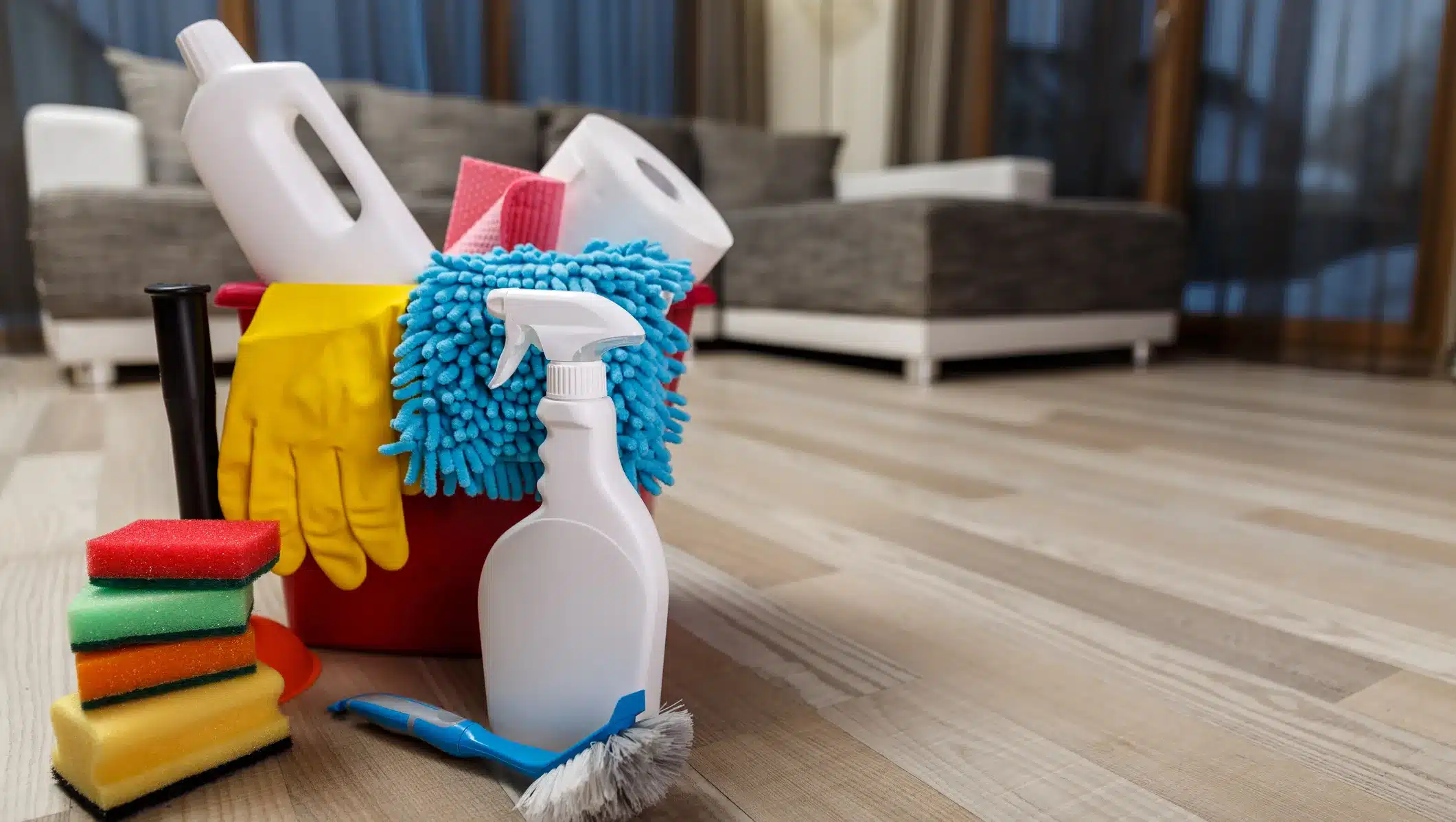As the days lengthen, residents have more time to deep clean the inside and outside of their homes. Humans often spend more time inside during the winters, practicing partial hibernation. When the weather becomes warmer, individuals may clean their wintertime messes and prepare to spend less time at home.
Springtime cleaning is essential for residents’ health and well-being. Individuals can minimize the adverse side effects of allergies by removing dust and other pollutants. Residents may follow six spring cleaning tips to improve the stability and sterilization of their properties.
Why is Spring Cleaning Important?
In the winter, residents keep their windows shut to improve the efficiency of their heating systems. Poor indoor ventilation can create a breeding ground for dust mites. The mites are microscopic pests that feed on dead skin.
Dust mites also grow in warm, humid environments. High concentrations of the pests can cause adverse health effects. Residents experience asthma attacks, runny noses, coughs, nasal pressure and watery eyes when dust mites invade their homes.
Cleaning the outside of your home is also essential to your health and well-being. Over time, mildew, algae and mold can grow under a property’s siding. Long-term mold exposure may cause headaches, rashes, fatigue and chronic respiratory conditions.
Mold and mildew accumulation can also rot vital materials. Rotting materials decrease a home’s safety, putting residents at risk. Individuals can ensure their properties’ stability by creating a spring cleaning checklist.
1. Make a Schedule and Checklist
The first step towards sanitizing your home this spring is creating a cleaning schedule and checklist. Residents should plan to deep clean their homes at the beginning of spring and keep up routine maintenance throughout the season. When creating a cleaning schedule and checklist, you should determine the bacteria and viruses you are at risk for.
- coli can live between a few hours and a full day. The bacteria living on your bedsheets may contribute to acne and other effects indefinitely. Residents may disinfect their kitchen and bathroom surfaces every day and change their sheets once a week to prevent illnesses.
Individuals can go longer between cleaning dust and debris from windowsills, shelves and desks. Residents should dust and vacuum their entire homes at the beginning of the spring to remove dust mites. After creating a schedule and checklist, individuals can start decluttering their properties.
2. Start By Decluttering
Removing junk and old materials from your home can create more space for a deeper clean. Some individuals miss dust and bacteria by keeping furniture, appliances and other materials in place. When residents move their couches, beds and chairs, they can remove all dust mites.
Cleaning out your refrigerator is also essential when spring cleaning. Disinfecting the inside of your refrigerator can remove Listeria, which causes diarrhea, nausea, chills and a fever. If the infection travels to your nervous system, you may experience convulsions, confusion, headaches and other severe health effects.
Decluttering your home can also minimize the number of surfaces for bacteria and mold growth. After you remove junk from your property, you can begin sterilizing.
3. Use Green Products
Choosing the right products is essential to residents’ health and wellbeing. Some all-purpose cleaners contain ammonia, sodium hypochlorite and trisodium phosphate. The additives cause throat, nose, eye and skin irritation.
Conventional cleaning products are also poisonous to humans and animals when ingested. Residents can improve their health and safety when spring cleaning by making eco-friendly cleaners. You may mix materials around your home to create an all-purpose cleaner.
Combining about a 1/4th cup of vinegar with one teaspoon of dish soap and two cups of water creates a natural disinfectant. You can also add about 12 drops of essential oils to the mix to improve its smell. Individuals may safely wipe down all their surfaces using the all-purpose cleaner.
4. Power Wash Your House
Individuals should also take advantage of the warm weather this spring by cleaning the outside of their homes. Power washing can remove mold, mildew and other contaminants from a property’s siding. It prevents rotting and safety hazards.
If you have brick siding, you can also power wash your house. Residents should use a low-pressure setting when cleaning brick homes. Individuals may also use an eco-friendly cleaner when power washing to avoid material damage and environmental degradation.
5. Replace Your Air Filters
Another spring cleaning tip individuals often forget is changing air filters. Heating, ventilation and air conditioning (HVAC) system professionals recommend residents switch out their filters every few months. When you install new air filters, you can reduce the quantity of dust and allergens indoors.
Clean filters also reduce one’s energy costs by increasing an HVAC system’s efficiency. Air filters provide economic and environmental benefits when adequately maintained. Individuals can also sterilize their bathrooms during their spring cleaning routines.
6. Sterilize Your Bathroom
Residents can deeply clean their bathrooms this spring to improve their health. Most individuals sterilize the countertops, tubs and toilets in their bathrooms regularly. They often forget to clean their faucets, showerheads, curtains and hair styling tools.
Spring is the perfect time to wash your shower curtains, bathmats and other fabric materials. Residents can also remove dust from their hairdryers’ vents to prevent overheating and fires. Sterilizing your entire bathroom may prevent illnesses and structural damage.
When is the Best Time to Spring Clean?
Residents can begin cleaning indoors at the beginning of spring, preparing to open their windows for natural cross ventilation. Cleaning the outside of one’s house depends on where they live. You may wait to power wash your home until after rainy months past, making the most of your mold and mildew removal practices.
